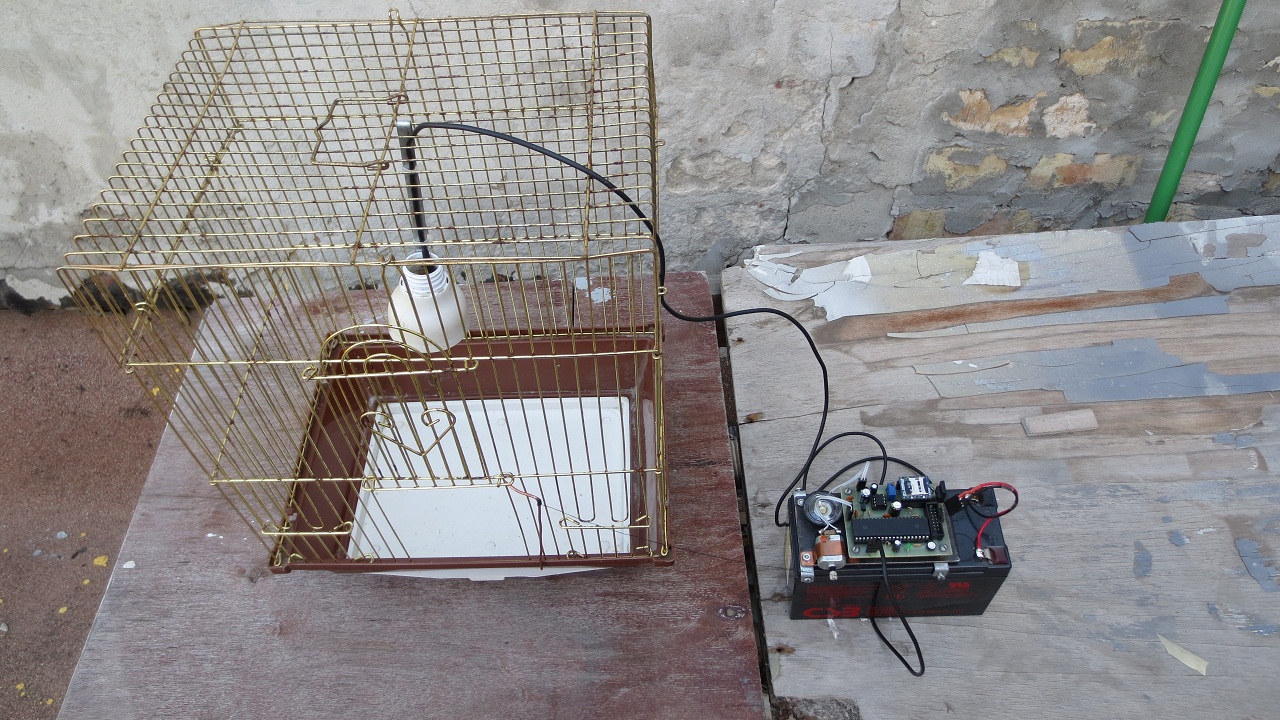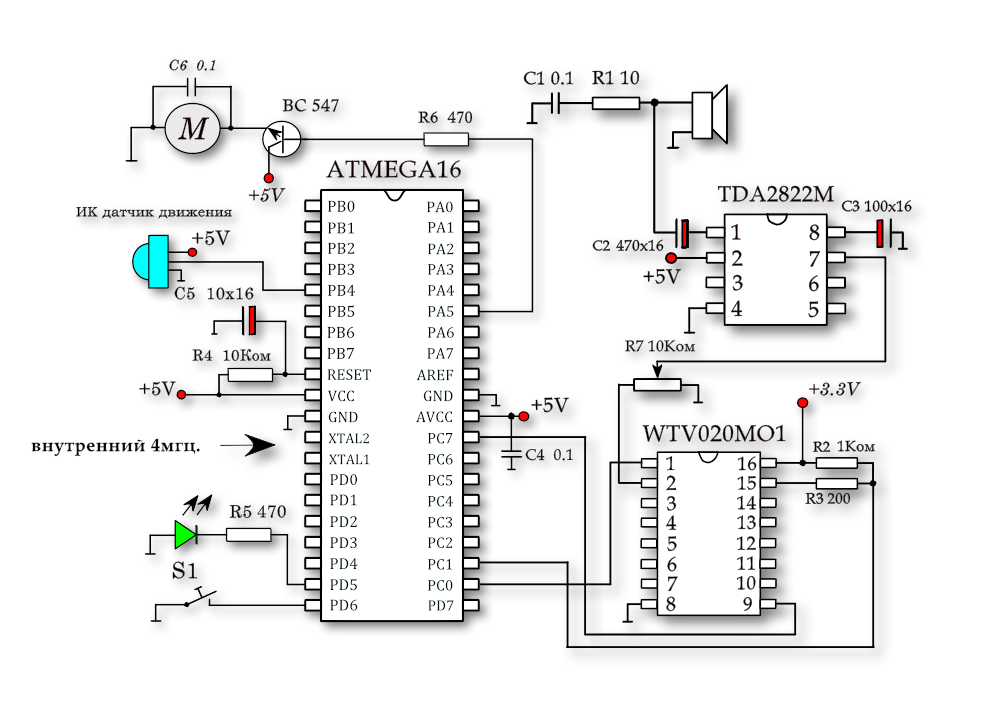Homemade do-it-yourself microcontroller

Hello everyone. An ordinary homemade hand-made on the microcontroller. Sometime the other day, a conversation about birds began between me and a friend. As it turned out from the conversation, he is breeding various songbirds, while he catches wild birds, followed by domestication. There are no special tricks in the device for catching birds. Cells are used with both mechanically triggered devices and with primitive twitching of the rope. Also used for bait as the bird itself, planted in a cage, and reproduce the singing of the desired bird with the help of some kind of player. I immediately matured a plan for the implementation of this device on a microcontroller. So I decided to share the result of my creation.
Immediately the question arose which cell to use. Since I didn’t have anything suitable, I had to purchase or make the cage myself. I didn’t want to make a cage, I wanted to focus more on electronics. Buying is not an option: it's expensive, and I only need it for a while. I didn’t intend to catch any birds, so to play around. So I decided to walk through my acquaintances in the hope of finding something suitable for this project. And - lo and behold! - a slightly rusted cell was found in the attic in the dust. She was great for my project. The door in the cage opened vertically, which greatly facilitated the management of door snapping.
Spending a little time, I came up with a scheme. Writing a program for the microcontroller also did not take much time - literally half an hour, and my creation was already working.

')
The principle of closing the cage door is quite simple. The cage door is supported by a special stop made of copper wire. A capron thread of the required length is attached to the stop. If you pull the thread, the support slides off, and the cage door closes under its own weight. But this is in manual mode, and I wanted to implement an automatic process without the participation of anyone.
A servo drive was used to control the mechanism for closing the cage door. But in the process, he made noise. The noise could frighten the bird. Therefore, I replaced the servo with a collector motor taken from a radio-controlled machine. It worked quietly and ideally suited, especially as it was not difficult to control the collector engine.

To determine if a bird is already in a cage, I used an inexpensive motion sensor. The motion sensor itself is already a complete device, and you don’t need to solder anything. But this sensor has a very large response angle, and I need it to react only in the inner area of the cell. To limit the angle of response, I put the sensor in the base, once served as an economy lamp. From cardboard cut out a kind of cap with a hole in the middle for the sensor. After shuffling with the distance of this plug relative to the sensor, I set the optimum angle for the sensor to trigger.

I decided to use the sound module WTV020M01 with a sound card on the microSD memory card as a barker for birds. That's what I was going to catch. Since I used one sound file, I decided to manage the sound module in a simple way, without using the exchange protocol between the sound module and the microcontroller.
When applying a low signal sound module to the ninth leg, the module began to play. As soon as the sound is played on the fifteenth leg of the sound module, a low level is established. Thanks to this, the microcontroller tracked the sound reproduction.
Since I implemented a pause between cycles of sound playback, to stop sound playback, the program lowers the first leg of the sound module (reset). The sound module is a complete device with its own amplifier for sound, and, by and large, it does not need an additional sound amplifier. But this amplification of sound seemed to me a little, and I used the TDA2822M microcircuit as a sound amplifier. In playback mode, the sound consumes 120 milliamps. Considering that the capture of a bird will take some time, I used a completely new battery from a back-up battery as an autonomous battery (I was still lying around idle).
The principle of electronic bird-catcher is simple, and the scheme consists mainly of ready-made modules.
Program and scheme - atmel-programme.clan.su/Levushka.zip
The operation of this device can be viewed on the video.
Source: https://habr.com/ru/post/254513/
All Articles